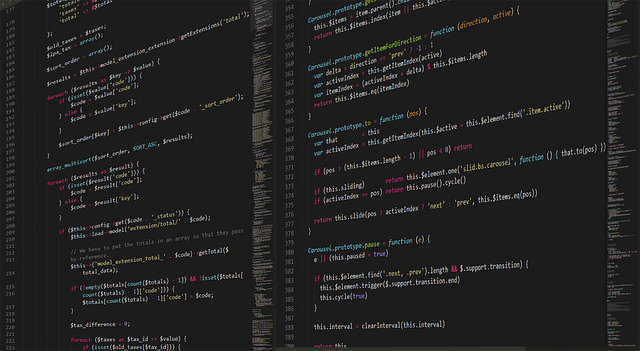Responsive Web Design (RWD) is a modern web development principle that allows websites to adapt seamlessly across various devices and screen sizes, enhancing user experience on desktops, tablets, and mobile phones. By leveraging flexible layouts, resizable images, and CSS media queries, developers create dynamic pages that rearrange content based on the viewing device. This approach simplifies maintenance, boosts accessibility, and improves SEO rankings, crucial in a mobile-dominated era. Key components of RWD include fluid grids, flexible images, and media queries, ensuring optimal rendering across devices. Adopting RWD is essential for delivering exceptional user experiences and enhancing search engine rankings on mobile-friendly sites.
In today’s mobile-first world, ensuring your website is optimized for various devices is no longer an option—it’s a necessity. This comprehensive guide explores the art and science of Responsive Web Design, breaking down complex topics into digestible sections. From understanding the fundamentals to implementing best practices and staying ahead of emerging trends, we’ll equip you with the knowledge to create engaging, adaptive websites that cater to every screen size. Let’s dive in and unravel the secrets behind successful mobile optimization.
Understanding Responsive Web Design: The Basics

Responsive Web Design is a fundamental concept in modern web development, ensuring websites adapt seamlessly to various devices and screen sizes. This approach is crucial for providing an optimal user experience across desktops, tablets, and mobile phones. By employing flexible layouts, images, and CSS media queries, developers create dynamic and visually appealing pages that reconfigure intelligently based on the viewing platform.
At its core, Responsive Web Design involves creating a single, streamlined codebase that can dynamically adjust content placement, image dimensions, and layout elements to fit different screen resolutions. This method eliminates the need for separate mobile websites or complex redirection processes, enhancing user accessibility and search engine optimization (SEO) rankings. As users increasingly access the internet via mobile devices, embracing Responsive Web Design is essential for any website aiming to remain competitive and user-friendly.
Why Mobile Optimization is Crucial for Modern Websites

In today’s digital era, mobile optimization is no longer a consideration but a necessity for modern websites. With a majority of internet traffic now stemming from mobile devices, ensuring your website provides an optimal user experience across smartphones and tablets is paramount. Responsive Web Design (RWD) plays a crucial role here, allowing websites to adapt seamlessly to different screen sizes and resolutions, thereby enhancing accessibility and usability.
By implementing RWD, businesses can cater to the diverse needs of their mobile users, who expect instant access to information and services regardless of the device they’re using. This not only improves user satisfaction but also boosts search engine rankings, as Google and other major engines prioritize mobile-friendly sites in their results. Moreover, a mobile-optimized website contributes to better engagement metrics, higher conversion rates, and increased customer retention.
Key Components of a Responsive Website

A responsive website is designed to adapt and provide an optimal viewing experience across various devices and screen sizes, from desktops to tablets and smartphones. The key components of a responsive site are fluid grids, flexible images, and cascading style sheets (CSS) media queries. Fluid grids create a layout that adjusts based on the available space, ensuring content remains readable and easily navigable. Flexible images resize themselves according to the container’s dimensions, preventing distortion or stretching.
Media queries in CSS allow developers to apply specific styles based on device characteristics, such as screen width, height, orientation, and resolution. This ensures that the website renders efficiently on every device, maintaining a consistent user experience. By incorporating these components, web designers can create dynamic and engaging sites that seamlessly transition between different platforms without sacrificing performance or usability.
Best Practices for Creating Adaptive Layouts

Creating adaptive layouts is a cornerstone of successful mobile optimization, ensuring your website seamlessly adjusts to various screen sizes and devices. The cornerstone of this approach is Responsive Web Design (RWD), which involves using flexible grid systems, flexible images, and CSS media queries. Grid systems allow content to reorganize itself based on the available space, while flexible images resize proportionately, preventing distorted visuals. Media queries, triggered by specific breakpoints, adjust styling accordingly, optimizing the user experience on desktops, tablets, and smartphones.
Best practices dictate prioritizing mobile-first design, where you create a simplified version of your website for smaller screens before expanding functionality for larger displays. This ensures faster load times and enhances accessibility. Regular testing across different devices is vital to ensure consistent performance. Tools like emulators and real device testing help identify and rectify issues early in the development process. Additionally, keeping layouts lightweight by optimizing code, images, and resources improves speed and overall user satisfaction.
Enhancing User Experience with Media Queries

Media queries are a powerful tool within responsive web design, allowing developers to adjust website layouts and styles based on the user’s device. By employing these queries, designers can ensure that every screen, from desktops to tablets to smartphones, receives an optimized viewing experience. This flexibility is crucial in today’s diverse digital landscape, where users access websites across multiple platforms.
With media queries, web developers can dynamically serve content tailored to specific screen sizes and resolutions. For instance, a website might display a single column layout on smaller screens for better readability and usability, while wider screens could show a three-column design for enhanced visual appeal and information organization. This adaptability not only enhances the overall user experience but also improves search engine optimization (SEO) by ensuring that content is delivered efficiently to all users, regardless of their device.
Optimizing Content for Different Screens

In today’s digital era, with a wide array of mobile devices in use, optimizing content for different screens is more crucial than ever for a seamless user experience. Responsive Web Design (RWD) plays a pivotal role in achieving this by ensuring that websites adapt gracefully to various screen sizes and resolutions. This approach involves using fluid layouts, flexible images, and CSS media queries to deliver an optimal viewing experience regardless of whether the site is accessed on a smartphone, tablet, or desktop computer.
By adopting RWD practices, web developers can create content that reorganizes and resizes intelligently. For instance, text becomes easier to read on larger screens while automatically adjusting for smaller ones. Images and other media elements also adapt, enhancing visual appeal across all devices. This not only improves user satisfaction but also boosts search engine optimization (SEO) rankings, as Google and other major search engines prioritize mobile-friendly sites in their results.
Speed and Performance Considerations

Mobile optimization isn’t just about making a website accessible on smaller screens; it’s about ensuring a seamless and swift user experience, no matter the device. Speed and performance are paramount in today’s digital landscape, where users expect instant gratification. A site that loads slowly or performs poorly on mobile devices risks losing visitors to competitors who offer snappier experiences.
Responsive Web Design (RWD) plays a crucial role here by ensuring your website adapts gracefully to various screen sizes and resolutions. This not only enhances usability but also boosts search engine rankings, as Google and other major engines prioritize mobile-friendly sites in their results. By optimizing images, leveraging browser caching, and minimizing HTTP requests, you can significantly improve page load times, leading to happier users and better business outcomes.
Testing and Debugging Techniques

Testing and debugging are critical components of mobile optimization, especially when implementing Responsive Web Design (RWD). Developers should employ a range of techniques to ensure the website functions seamlessly across various devices and screen sizes. Automated testing tools can help identify issues quickly by simulating different device configurations and network conditions. These tools allow for efficient validation of layout responsiveness, ensuring elements resize and rearrange appropriately.
Debugging during development involves checking for common mobile-related problems like touch input errors, slow loading times, or broken layouts. Using developer console logs and browser debugging tools can pinpoint specific issues within the code. Additionally, manual testing on actual mobile devices provides real-world insights, catching subtle bugs that might be overlooked in simulated environments. This iterative process of testing and refining is essential to delivering a polished, user-friendly experience for all visitors, regardless of their device.
Future Trends in Mobile Web Design

As technology continues to evolve, so do user expectations for mobile web experiences. Future trends in mobile web design are expected to focus on enhanced usability and accessibility across various devices. One key aspect driving this shift is the increasing adoption of Responsive Web Design (RWD) that adapts content based on screen size and orientation. This ensures a seamless experience whether users access websites from smartphones, tablets, or desktops.
Beyond RWD, emerging trends include the use of advanced technologies like AI for personalized content delivery and voice-activated interfaces. The integration of augmented reality (AR) and virtual reality (VR) is also gaining traction, offering immersive experiences that can revolutionize how users interact with online content, especially in e-commerce and educational sectors. These innovations not only cater to the present needs but also set the stage for future mobile web design advancements.
